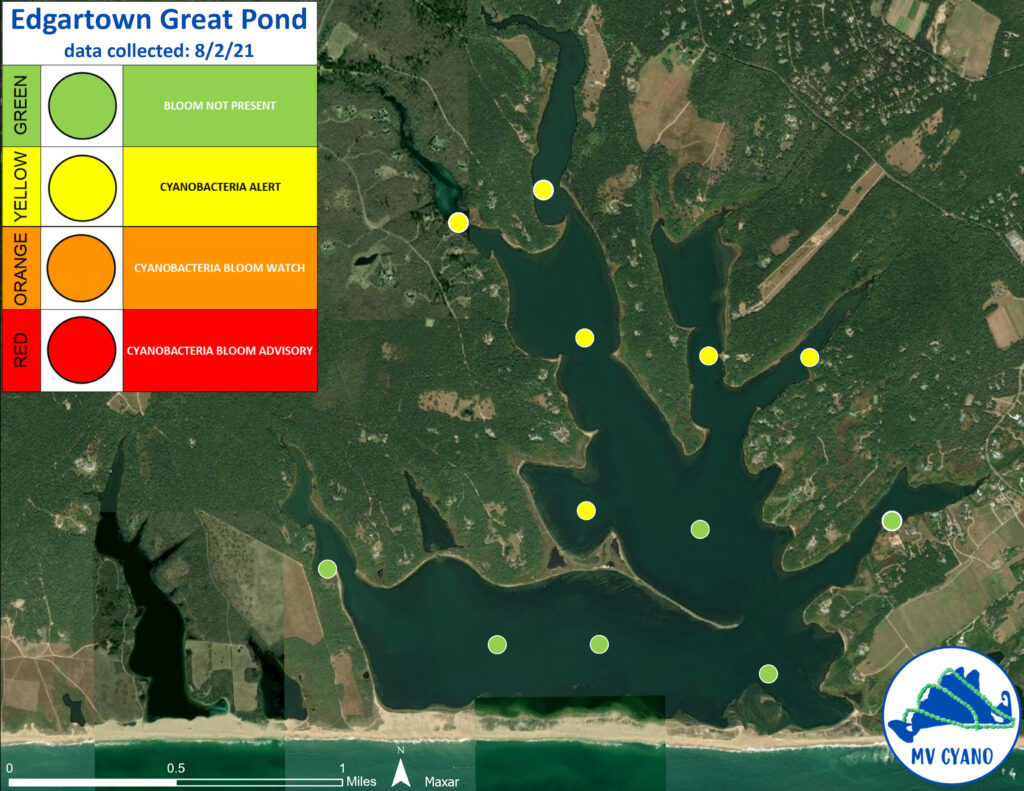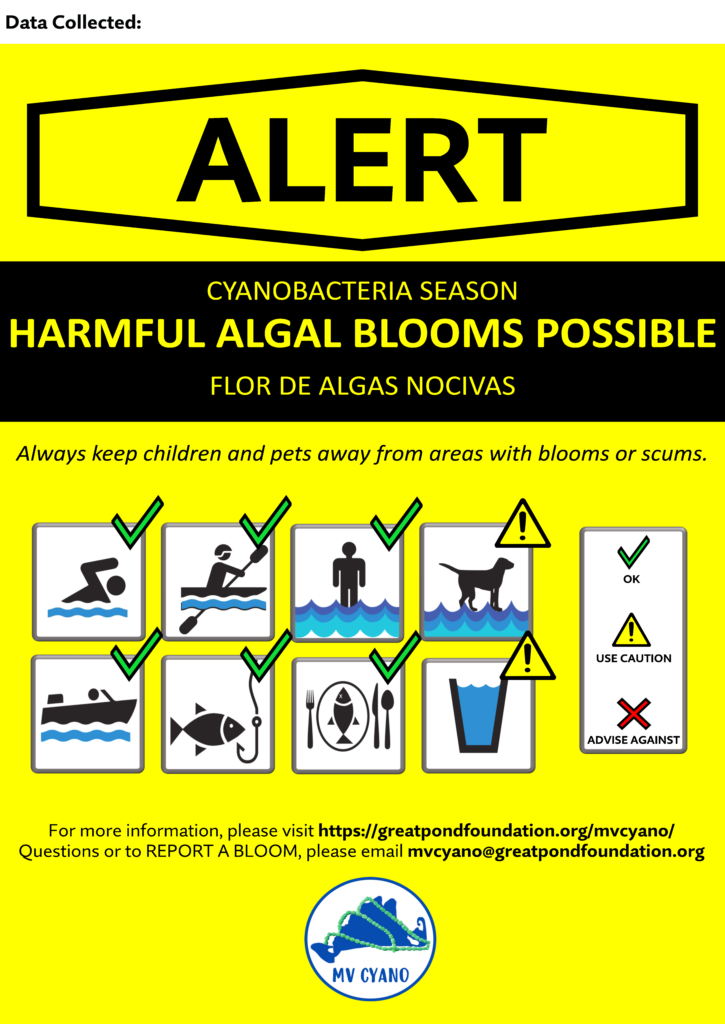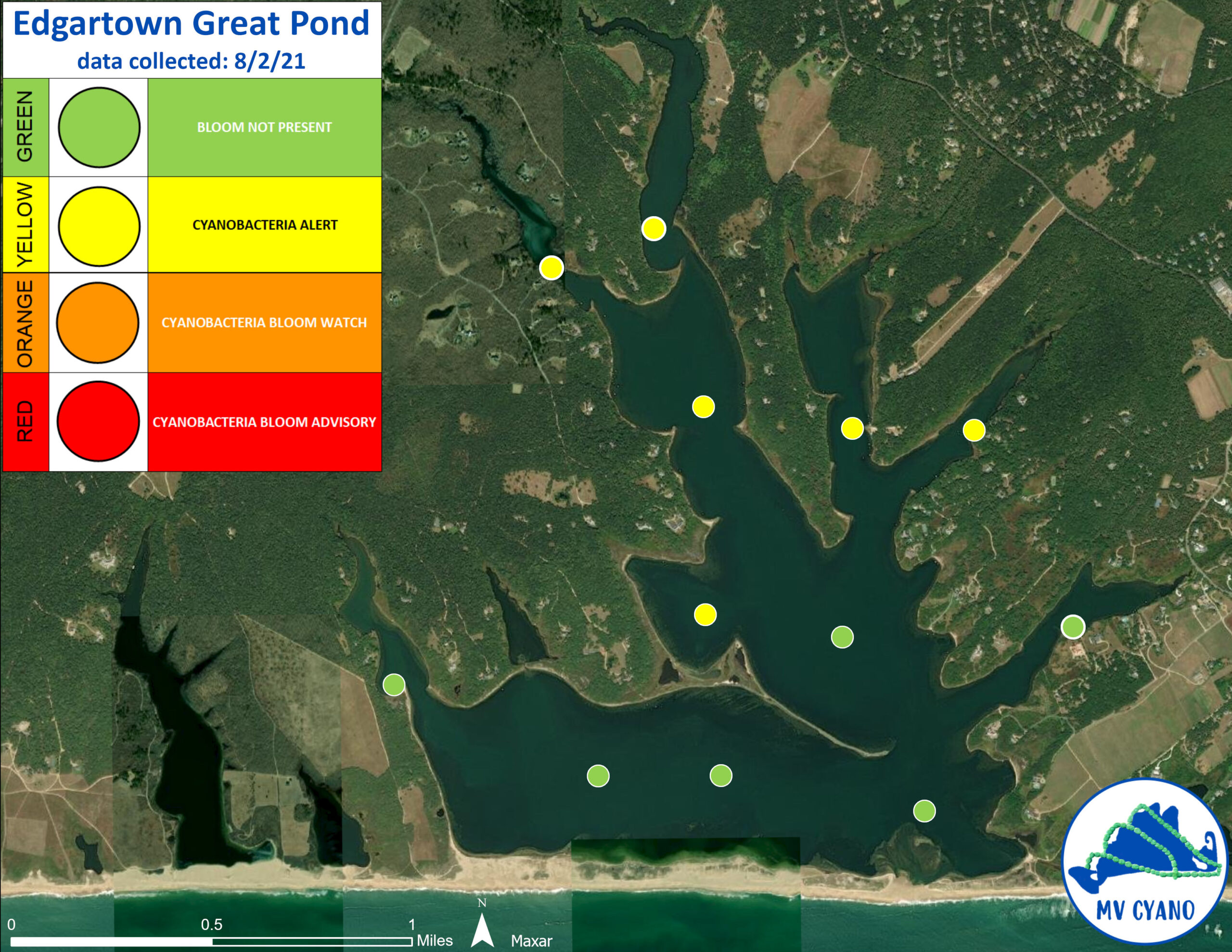ALERT for Parts of Edgartown Great Pond
A CYANOBACTERIA ALERT has been issued by the Edgartown Board of Health for the northern portion of Edgartown Great Pond. This change in designation from green to yellow indicates that as the pond’s salinity decreases and summer temperatures increase, there is evidence that the concentration of cyanobacteria cells in the water is growing. One of the best ways to reduce the likelihood of a cyanobacteria bloom, is to increase the salinity. Here’s to hoping a cut is possible very, very soon.


MV CYANO is a collaborative initiative among Island Boards of Health and scientists from Great Pond Foundation to bring a first of its kind cyanobacteria monitoring program to Martha’s Vineyard. During bloom season (spring-fall), data are collected on a weekly basis and Island Boards of health match the data to a pre-defined set of color-coded thresholds. Each tier of color corresponds to an associated level of risk and public health recommendations.
Per MV CYANO, a yellow CYANOBACTERIA ALERT means that it is bloom season and that conditions are such that it is possible for a bloom to occur. When there is an ALERT in place, it is recommended that pets and livestock be kept away from the water and that no humans ingest the water, but that all other recreational activities are okay. This is a conservative approach intended to safeguard the public, knowing that conditions can change rapidly. The yellow tier represents conditions that are safer than the drinking water standard for cyanobacteria in Massachusetts.
Speaking with Edgartown Animal Control Officer, Dr. Buck, she reminds us that there is no antidote to cyanotoxin exposure for pets and that it is best to err on the side of caution whenever there is a chance of a cyanobacteria bloom. Please also use common sense, if you ever see a blue-green scum on the surface of a body of water, no matter the MV CYANO risk designation, please keep your pets, livestock, and self away from the water and report the bloom by emailing mvcyano@greatpondfoundation.org. MV CYANO data is collected weekly in most of the ponds we monitor, but there is a delay between sampling, testing, and posting, and conditions can change in the interim.
If you have been exposed to a bloom or have further questions, please contact your physician. If your pet or livestock has been exposed to a bloom or you have further questions, please contact your veterinarian. For more information about the MV CYANO program and to view the latest maps: https://greatpondfoundation.org/mvcyano/. To learn more about cyanobacteria, please visit our cyanobacteria resource.

